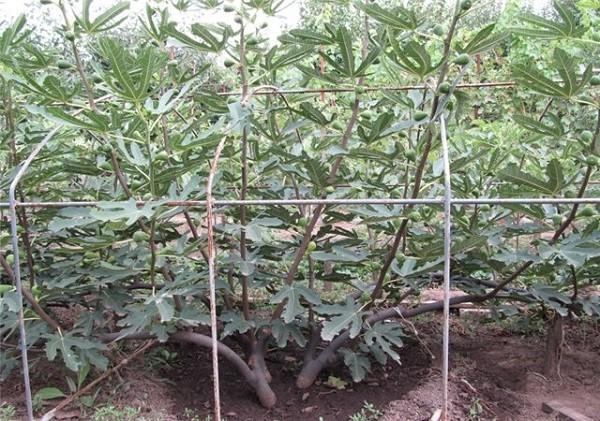What you need to know when growing figs in the garden?
 Lovers of exotic have long and successfully grown figs with unusually tasty and healthy fruits on their plots. If you know certain nuances, there are no special difficulties with this culture. Figs are able to tolerate a drop in temperature to 10 degrees below zero without loss, provided that at this moment there are no leaves on it. If the temperature drops to 20 degrees below zero, the entire surface of the plant will freeze. This must be taken into account when planting crops in regions with cold winters.
Lovers of exotic have long and successfully grown figs with unusually tasty and healthy fruits on their plots. If you know certain nuances, there are no special difficulties with this culture. Figs are able to tolerate a drop in temperature to 10 degrees below zero without loss, provided that at this moment there are no leaves on it. If the temperature drops to 20 degrees below zero, the entire surface of the plant will freeze. This must be taken into account when planting crops in regions with cold winters.
Fig has many names, among them - fig tree, fig tree.
There are two ways to grow figs in the garden:
- directly in the open field - the method is more acceptable for the southern regions;
- in a tub - the best option for the northern regions.
Depending on which method is used, there are certain nuances of caring for a deciduous plant, from planting to wintering.
Planting and wintering figs in the open field
Those gardeners who decide to plant a plant immediately in the garden should know that it is better to plant at least two copies, while they should be of different varieties. This is necessary for better pollination.
Figs should be placed in the planting hole at an angle of 45 degrees. There are two planting methods, depending on which the methods of hiding figs for the winter are also predetermined:
- Group... The seedlings are arranged in pairs together in a circle, with the tops facing the center. For the winter, a shield up to 1 m high is installed around them, inside which leaves must be poured, and snow on top of them.
- Single. In the fall, you should dig a shallow trench and put fig shoots in it.
In order to minimize winter losses, it is better to form figs not as a tall tree, but in the form of a bush with a maximum crown height of 1.5 m.
Wintering figs growing in a tub
When the plant grown in a large pot has shed all the leaves, it is necessary to rearrange the tub for the winter in the cellar. At the same time, adult fruiting specimens will have unripe figs on the branches from the second wave of the harvest. In this state, with fruits on twigs, but without leaves, the figs should stand in the cellar until the end of spring. In mid-May, he should be brought back to the garden. There the overwintered fruits will ripen, and at the end of May new ones will be tied.
If there is sufficient moisture in the cellar, there is no need to water the tree. In low humidity, it is better to water a couple of times so that the figs do not dry out.
How are fig fruits set?
Most figs that grow naturally in warm climates need additional pollination, although they are dioecious plants (those that have male and female flowers). There is even a special insect responsible for the future harvest of sweet fruits - the blastophage wasp. She is pollinating figs, but lives only where it is warm all year round.
In the local climate, it is better to use hybrid varieties bred by breeders for growing garden and indoor figs. They are called parthenocarpic and do not need additional pollination, setting the fruit on their own.
Figs bear fruit in two waves, the first crop is formed in the leaf axils in May, and in parallel with it, the fruits of the second wave are tied on the branches.